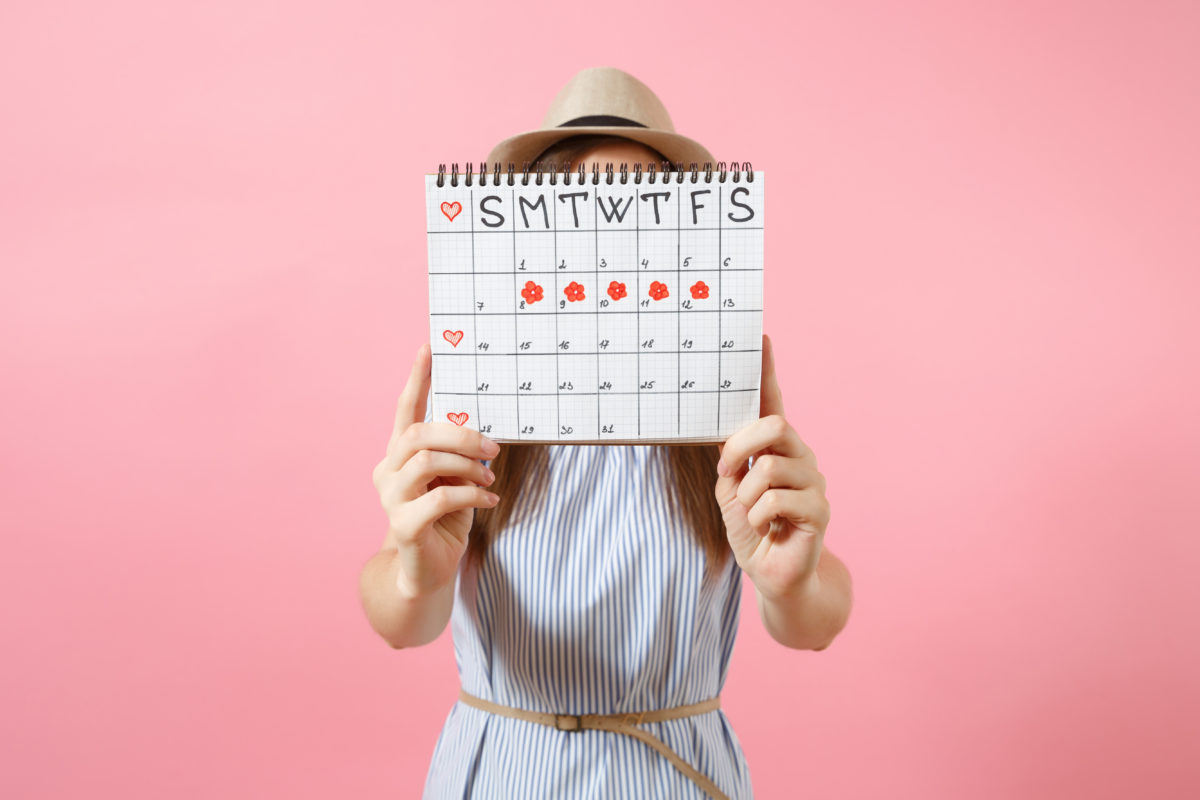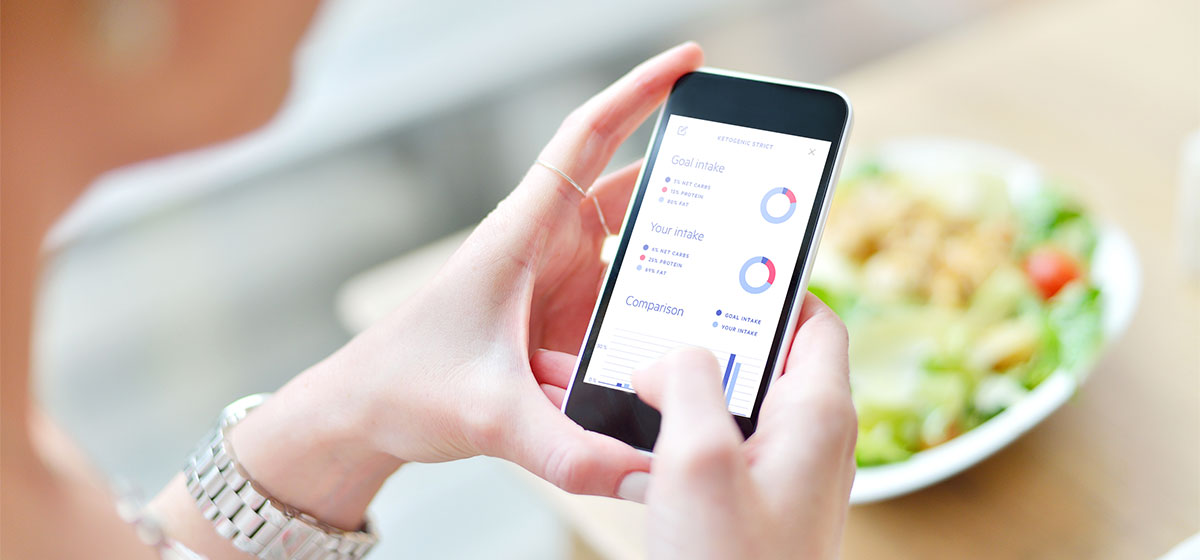
It has been shown that a shift in focus from carbohydrates to fat and protein as the female cycle progress could outperform a more traditional and linear way of dieting. That, along with an increased calorie intake halfway through, could, in fact, be the small changes you need for success, especially if you’re one of those struggling with adherence issues.
With that being said it may sound quite point-blank and simple – and I’ll argue it is if you only know 1) exactly how to do it and 2) where to start from. Fortunately, Lifesum itself will give you an accurate starting point regarding calories and this post will give you all the additional information and confidence on how to do it. Problem solved.
So, before we are going into all the practical stuff that you really want to read, I need to give some background information starting with a brief recap of the menstrual cycle:
-
- A normally cycling woman has two distinct phases; the follicular phase and the luteal phase, which both has important pros and cons to consider in a diet.
-
- The nature of the follicular phase makes the female body more sensitive to insulin which basically means that the body will handle carbs much better.
-
- The luteal phase makes the female body rely more on fat as a fuel, at the same time there is a notable impairment in insulin sensitivity, meaning a lower-carb approach could be a superior choice during these weeks.
- The body temperature and the metabolic rate will increase around ovulation and stay high throughout the luteal phase. This justifies a slightly higher calorie intake or, if you prefer, eating same amounts of calories and taking advantages of the physiology to burn more body fat.
The Follicular Phase 
This phase goes on from menstruation to ovulation and is characterized by a relatively low progesterone signalling and the primary acting hormone will be estrogen, which gradually increases until it peaks around ovulation. Generally speaking, this is a good thing because hunger and cravings will go down or at least be more easily controllable compared to the following luteal phase, and the ease will especially be more prevalent closer to ovulation. The hormones will also impact the physiology without you even noticing it, greater insulin sensitivity and a shift in fuel utilization are good examples. (1, 2)
So what’s happening here is that your body will be more prone to utilizing carbohydrate as fuel at rest and during exercise. That, in combination with greater insulin sensitivity, certainly gives more room for carbohydrates in your diet.
Regardless if carbohydrates are a major part of your diet or not, it’s hard to deny that most of us love them. Most of us will also lack the motivation to avoid them in the long run. And while body-fat levels and training status will have a huge impact on your body’s ability to handle carbohydrates, the hormonal fluctuations within your cycle is also a major player to consider.
The Luteal Phase 
While the follicular phase has a distinct start that won’t go unnoticed, the same cannot be said for the luteal phase which starts with ovulation. An ordinary test strip or an app like Natural Cycles could be helpful tools here, just a few cycles or so to make it more precise. However, this is not necessary only optimal, using an average cycle length of 28 days and split that into two halves works fine in most cases.
Here, both estrogen and progesterone will oscillate up and down which makes this period more complex. But in general, the luteal phase is associated with more frequent food cravings, more hunger and increased calorie intake. This may be especially true for some in the last few days, just before menstruation. Whether food cravings and hunger are something you’re experiencing here or not, it could be good to be aware of the slightly increased metabolic rate that also comes with this phase. This justifies some extra calories to refill the gap, but if you’re doing quite good without it and aiming for fat-loss – go the “easy” way and keep the calories unchanged.
In contrast to the follicular phase, some degree of insulin resistance will be seen here due to the shifts in hormones, and your body will use proportionally more fat for fuel booth at rest and during exercise. In a practical sense this makes a perfect fit for a diet higher in fat at the expense of carbohydrates. (2, 3, 4)
Putting it all together in Lifesum 
A good place to start when your period comes is to cut fat intake by 10% in Lifesum (Me > Settings > Nutrition Settings). So let’s say your preferred intake of fat is 33%, now bring it down 10 per cent units to 23%. To fill the gap just increase the carbohydrates with the same per cent, this means that the protein intake will stay equal. And now for the next two weeks or so take the opportunity to feast on tasty carb sources, preferably as unprocessed as possible. Nice options could be quinoa, root vegetables and fruits.
Once you reach ovulation turn back the ratio between fat and carbs as it was before, and as mentioned above also consider if you want to increase the daily calorie intake to combat food-cravings or hunger. If so, I recommend adding +100 kcal/day to start with, but for some even +200 kcal could be useful. To do so, go to Me > Settings > Personal Details
If you don’t have the experience to setup own percentages of carbohydrate, protein and fat or if you don’t know whether your actual setup is suitable or not for the changes above I´ve got a solution for that as well. However, this won’t give you the whole picture because there is no guarantee that the absolute protein intake will be adequate for your goal and weight. And if
you already are using your own setup with success it may be a better choice to keep it that way and just implement the +/- 10% rule on top of it. Anyway, the following figures will be a good starting point and definitively suit most cases:
Macros during the follicular phase:
-
- Carbs (45%)
-
- Protein (30%)
- Fat (25%)
Macros during the luteal phase:
-
- Carbs: (35%)
-
- Protein (30%)
- Fat (35%)
Disclaimer: We still need more research to figure out the optimal macronutrient composition throughout the menstrual cycle. However, there is novel data from Danish scientists suggesting promising results with very similar figures and applications has been presented above. That being said, in my coaching practice I’ve found that some slight adjustments, in particular, a higher protein intake, will do the job even better for females with fat-loss related goals. (5)
All of the content and media on Lifesum is created and published for information purposes only. It is not intended to be used as a substitute for medical advice or treatment. Users should always consult with a doctor or other health care professional for medical advice. If you have or think you are at risk of developing an eating disorder, do not use the Lifesum app and seek immediate medical help.